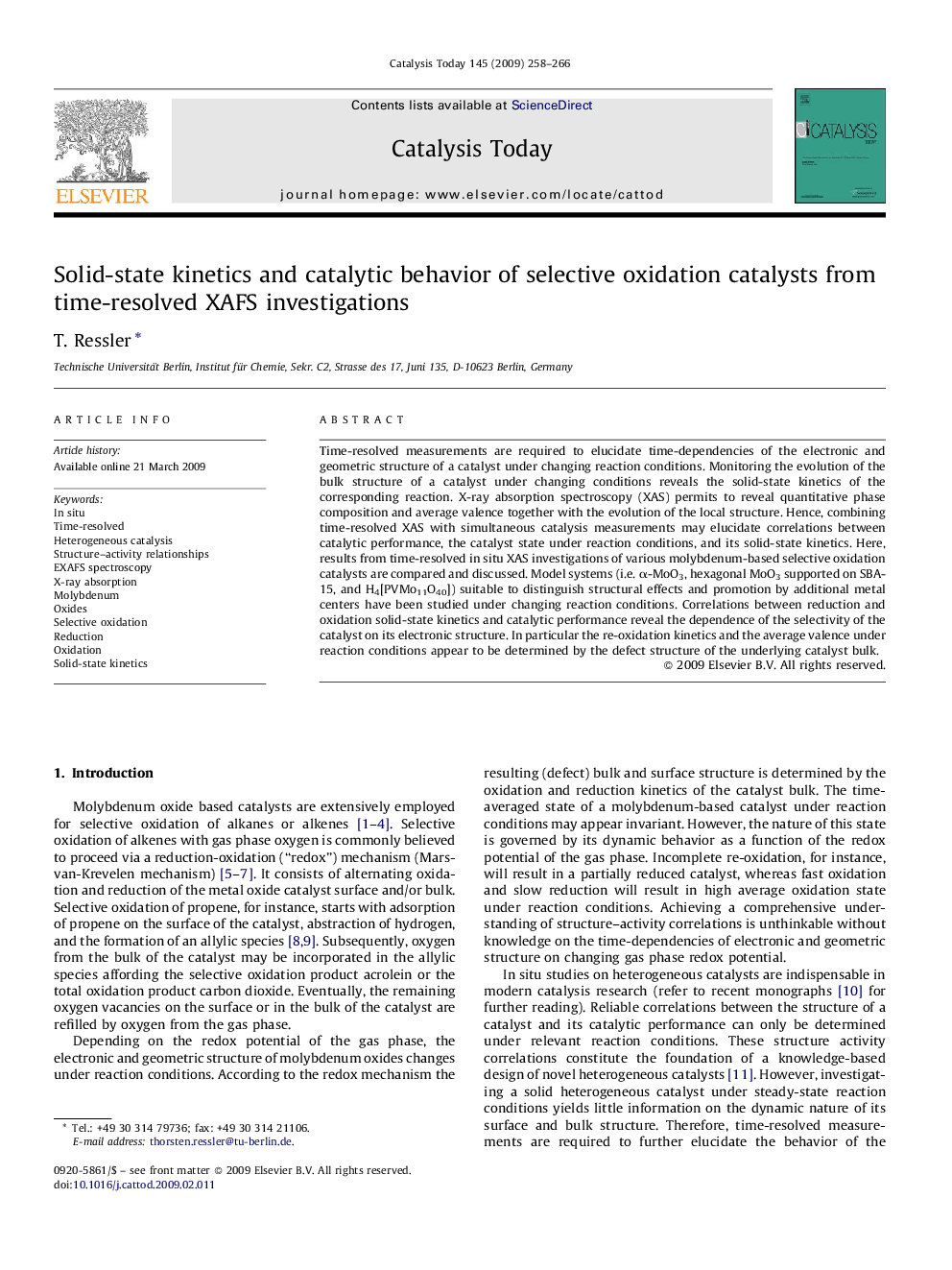| Article ID | Journal | Published Year | Pages | File Type |
|---|---|---|---|---|
| 57160 | Catalysis Today | 2009 | 9 Pages |
Abstract
Time-resolved measurements are required to elucidate time-dependencies of the electronic and geometric structure of a catalyst under changing reaction conditions. Monitoring the evolution of the bulk structure of a catalyst under changing conditions reveals the solid-state kinetics of the corresponding reaction. X-ray absorption spectroscopy (XAS) permits to reveal quantitative phase composition and average valence together with the evolution of the local structure. Hence, combining time-resolved XAS with simultaneous catalysis measurements may elucidate correlations between catalytic performance, the catalyst state under reaction conditions, and its solid-state kinetics. Here, results from time-resolved in situ XAS investigations of various molybdenum-based selective oxidation catalysts are compared and discussed. Model systems (i.e. α-MoO3, hexagonal MoO3 supported on SBA-15, and H4[PVMo11O40]) suitable to distinguish structural effects and promotion by additional metal centers have been studied under changing reaction conditions. Correlations between reduction and oxidation solid-state kinetics and catalytic performance reveal the dependence of the selectivity of the catalyst on its electronic structure. In particular the re-oxidation kinetics and the average valence under reaction conditions appear to be determined by the defect structure of the underlying catalyst bulk.
Keywords
Related Topics
Physical Sciences and Engineering
Chemical Engineering
Catalysis
Authors
T. Ressler,
